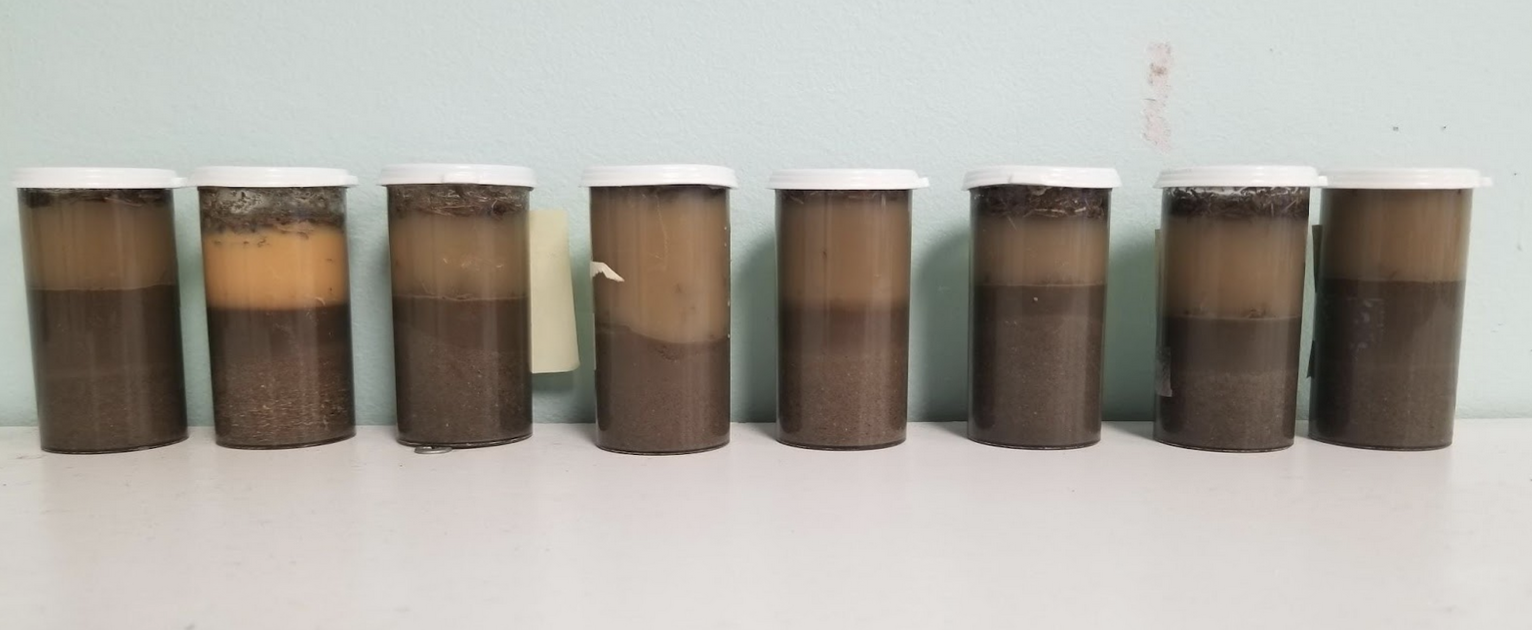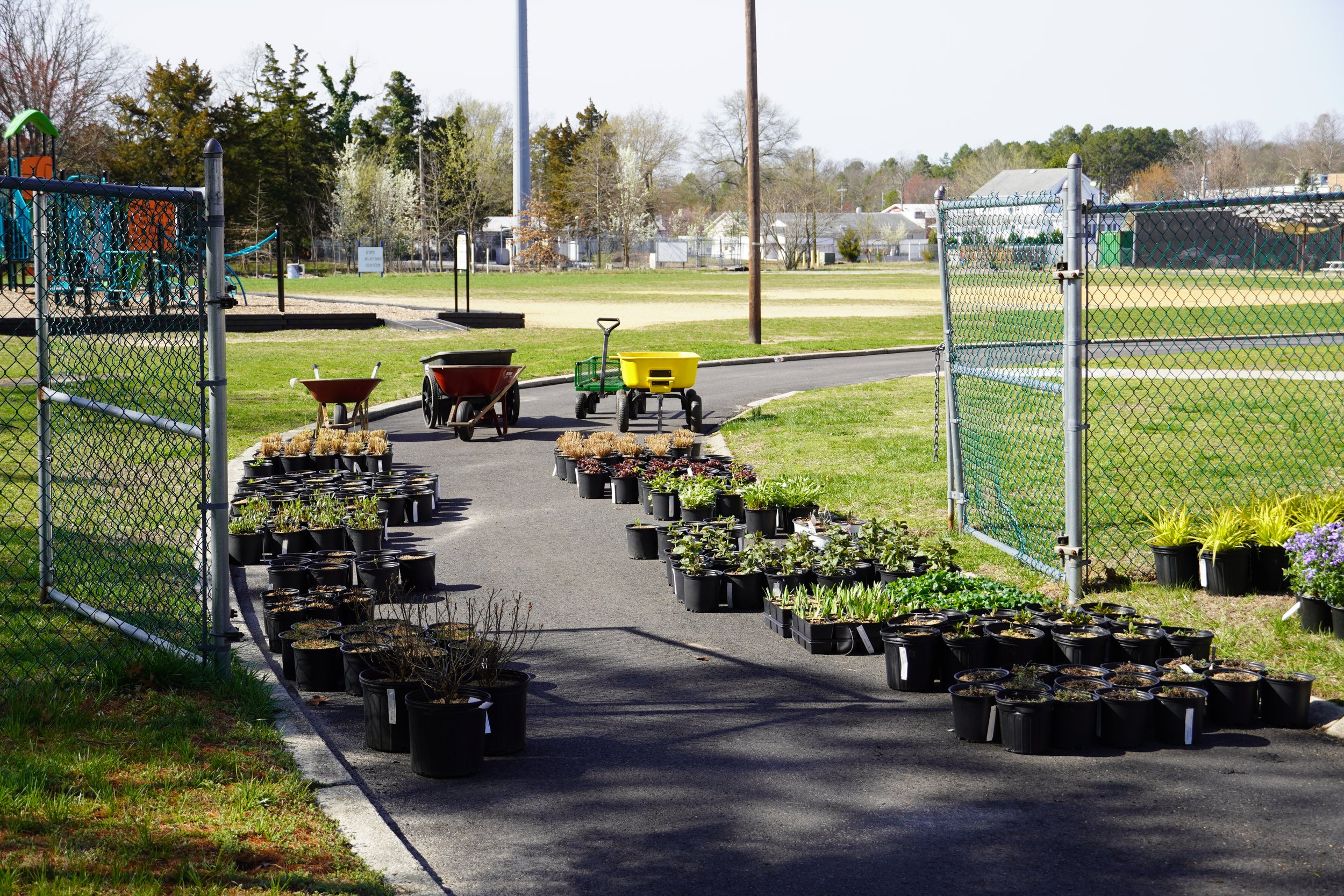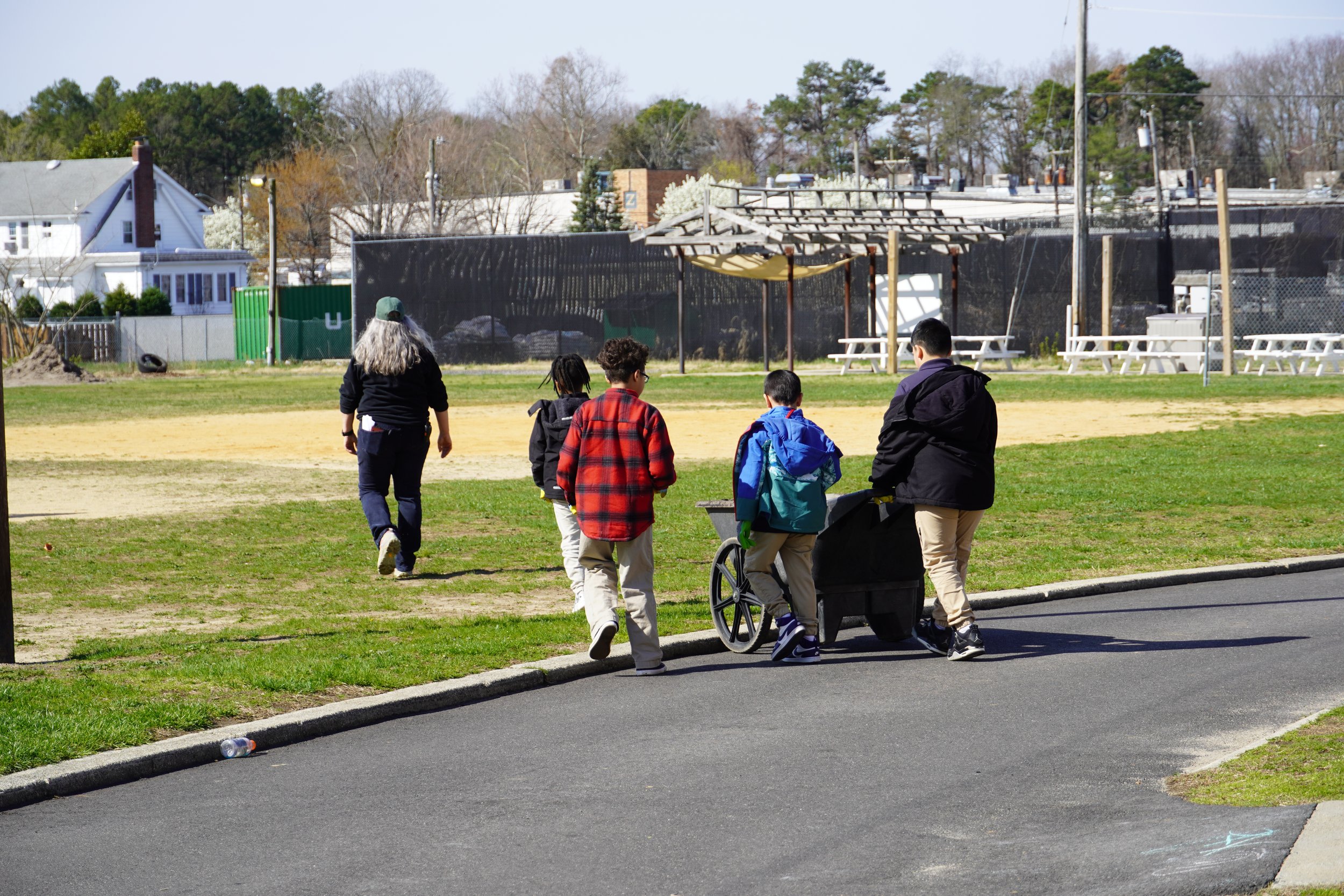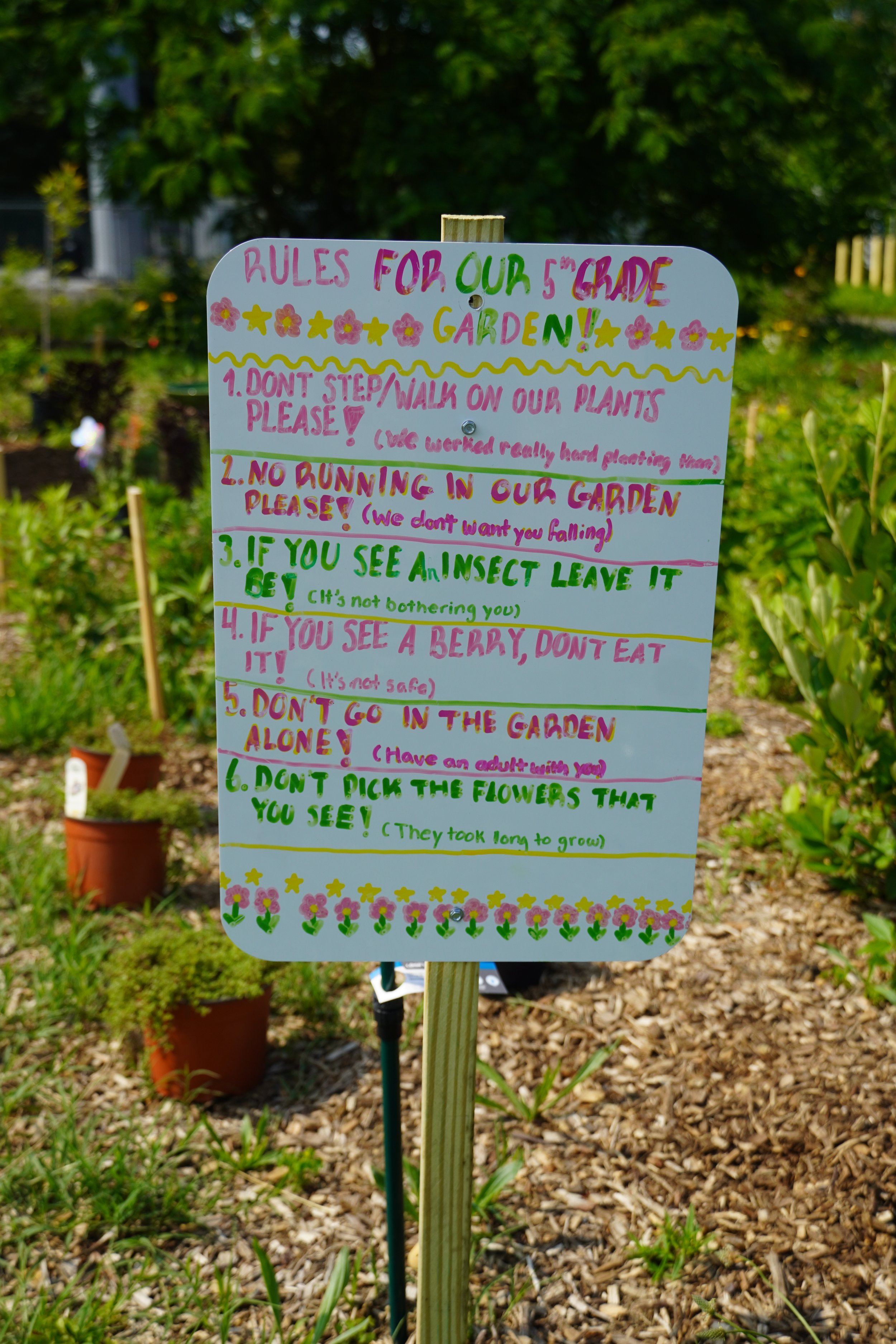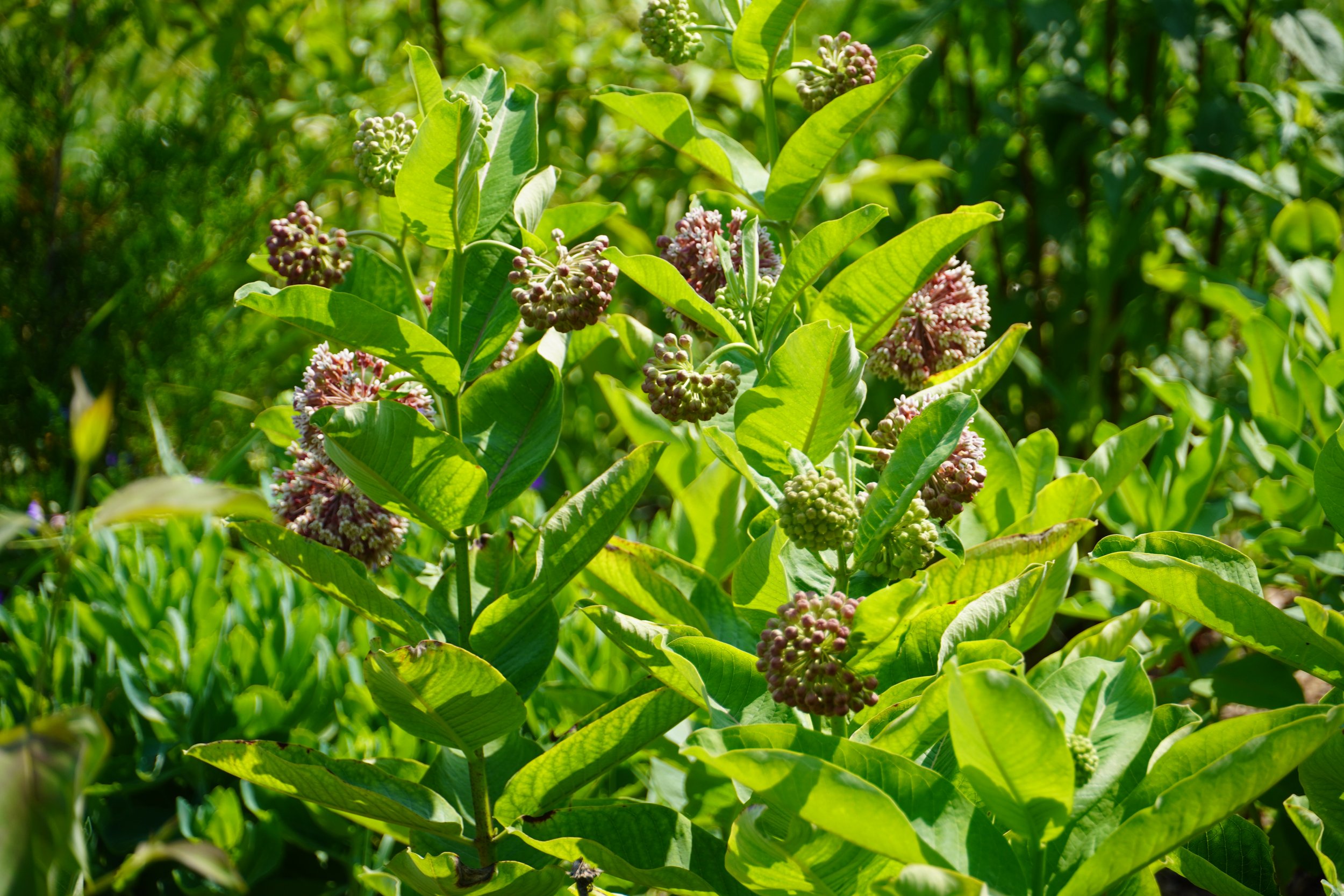Stewards in the Making
How a fifth grade garden became
a place for learning, care, and connection.
A Field Journal Audioessay edited by Tom T. Young
Listen Along Below (~9 min)
I. Seeds of Stewardship
Welcome to the Fifth Grade Garden
The sun is out.
The gardens are buzzing.
It's mid-June, and the outdoor classroom is fully alive — Coreopsis beaming, Milkweed brimming, Agastache just beginning to bloom. A handful of pinwheels spin quietly in the breeze, their iridescence warding off the curious geese.
Young scientists are everywhere, liberated from indoors.
Some search for bugs beneath blueberry shrubs with their magnifying glasses.
Others tour through the new gardens, shrieking with joy when one finds a butterfly.
At the edge of the young pollinator meadow, a small group gathers.
One of the older students steps forward.
He’s quiet at first, a little shy.
His teacher prompts him to begin.
“Welcome to the fifth grade garden!”
He reads the first rule, posted on a hand-colored sign:
“Please don’t walk on the plants. We worked really hard planting them.”
The younger kids nod. A few smile.
Then, led by their fifth grade guide, they follow a meandering path toward the picnic tables where they paint rocks to line the garden’s edge and talk about food webs.
The Fifth Grade Pollinator Garden & Outdoor Classroom
What Brings Us Here
It started with an email.
Dawn — a teacher in South Jersey — reached out to us with a question:
Would we come talk to her students about designing ecosystems?
Her fifth grade class was dreaming up a pollinator garden, with Monarchs in mind. They had big ideas, limited resources, but offered the kind of questions that make this work worth doing. The vision she shared wasn’t just about planting native species. It was about restoration, stewardship, and helping students understand how they could shape the world around them.
Dawn teaches STEAM — science, technology, engineering, art, and math — but more importantly, she teaches what it looks like to apply those tools in the real world. To observe, to collaborate, to build, to create, to learn as praxis.
Her email made it clear: this was going to be a true partnership.
What followed was an invitation to listen, to learn, and to support a group of young ecological designers as they began to co-create a beautiful space of their own.
II. Designing With, Not For
The Students’ Vision
Before we sketched a single line or placed a single plant, the fifth grade students had already done the most important work: imagining what the garden could be — for themselves, for pollinators, and for the planet.
They envisioned…
A space of quiet learning and sensory exploration.
A place to study, to draw, to spot birds through binoculars.
Colorful meadows full of blooms, trees for squirrels, painted rocks along winding paths.
Habitat for Monarchs, hummingbirds, bees, and swallowtails.
Water in the summer, shelter in the winter, and signs to help people learn how to take care of it all.
They wanted their garden to offer something back—to clean the air, cool the land, and welcome those who didn’t always feel invited into nature.
It was ambitious. Thoughtful. Equitable. Specific.
Dean & I were excited to help bring it to life.
An Inventory of Curiosity
We began by asking the students to become site analysts.
Soil jar test analysis performed by fifth grade STEM class
Working from a checklist we created, they divided the schoolyard into plots and got to work testing soil samples in jars, mapping the wind and sun, counting insects, and noting what they could see, hear, and feel on the site. They logged everything: anthills, mushrooms, seed pods, even the smell of food from nearby apartments.
Their observations became the foundation of the design process.
Before there were sketches, there was data… and it all came from them.
Paper Gardens & Wild Ideas
A few weeks later, we came by the school for a full design workshop.
We started with a short talk and big questions. What is a pollinator garden? Why native plants? What was here before Christopher Columbus? How do we make good choices about the land around us?
Then the students split into two groups. Dean led a session on space and form, using trace paper and 3D-printed picnic tables. What does a path feel like? How can plants and materials shape movement?
On the other side of the room, I guided the plant palette process: groundcovers, bloom times, textures, pollinator favorites. Students circled what they loved, cross-referenced with their goals, and debated what would work best.
Some of their ideas were wild (including installing a whole river!), but beneath the imagination was intention.
Where Drawings Take Shape
Back in the studio, we began the work of layering it all together.
Dean traced over the students’ sketches, finding overlaps and edges, moments of alignment, and room for contrast. What emerged was a winding, playful layout — one that nodded to Burle Marx’s wild geometry while honoring the students’ ideas.
I gathered their favorite plants and cross-referenced them with their ecological goals — seasonal blooms, habitat for bees, berries for birds, and a palette that would feed life and curiosity throughout the year.
Once the final list was ready, we coordinated the delivery with our favorite local nursery. Dawn and the students had already prepared the site: soil tilled, compost laid. Everything was ready to go.
Plants delivered, wagons and wheelbarrows ready, time to plant!
Groundbreaking
When delivery day arrived, we helped locate the funky layout on the ground, placed the plants to mark the spaces and paths, and then we stepped back.
Over the next few weeks, the students took the lead planting every plug, building picnic tables, and bringing the space to life with signage, decoration, and care.
Dawn continued pulling resources from every direction — native plant societies, seed donors, volunteers — weaving together a patchwork of community support.
Little by little, the garden came into being.
Not in a single weekend, but over time.
Planted by many hands, all in shared sunlight.
III. Roots and Ripples
The Ecology of Education
What’s happening here is more than a school project. It’s more than a pollinator garden.
It’s an approach to learning that understands how knowledge, real knowledge, grows best in relationship.
Dawn’s program blends science, story, design, art, and care. It asks students to think like ecologists by acting like ecologists. To not only observe systems, but to participate in them. To build something they can touch, return to, and care for over time.
And in doing so, they learn something bigger than plant names or pollinator facts.
They begin to understand that their choices have ripple effects. That their voice matters.
That they belong in these spaces — not just as students, but as stewards.
This kind of learning isn’t extra. It’s essential.
It teaches systems thinking. Interconnection. Empathy.
It’s slow, real, and rooted in place.
It’s how we grow the next generation of scientists, designers, artists, and storytellers.
Shared Ground
By the end of this project, every student had left their mark on the land, and it had left its mark on them.
That’s what good ecological design does.
It’s not just about building beautiful spaces. It’s about cultivating relationships —
between people and place, between past and future, between imagination and reality.
Projects like this remind us: design isn’t just for the professionals.
It’s a way of seeing. A way of asking:
What do we care about? And how do we care for it?
Every neighborhood, every schoolyard, every sidewalk strip has potential.
To hold water. To host insects. To teach, to invite, to bloom.
We just have to notice it. And tend it.
A Pause in the Chaos
Between the painted rocks and the student-guided tours, the butterfly sightings and the bright sun of an early summer’s day, we find a moment to pause.
Dawn, Dean, and I stand at the edge of the fifth grade garden, watching the young scientists, artists, and designers scatter through the landscape they had shaped.
Dawn points to a stand of blooming milkweed. Big pom-poms of mauve and pink hovering over the garden bed. She tells us that her students started growing new milkweed seeds over the winter — part of their butterfly restoration work.
These young scientists learned to care for them in trays, watched them sprout, and soon, they will join these tall blooming ones: rooted in the soil, feeding the very Monarchs they’d studied.
These are the seeds that matter.
Painted stones line a wood chip path, containing an assortment of native perennials
For more about this project, take a look at an article published by Liberty Science Center about our collaboration with Dawn and her students.


